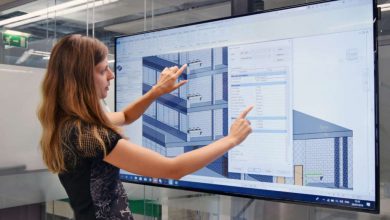A Revit project set up correctly helps avoid unexpected difficulties within the project. Each project has specific characteristics and requirements, so there is no standard to follow when starting a new project. However, we know how to identify various issues and their solution. At a certain level, BIM projects have specified provisions in the BEP (BIM Execution Plan), a document that can be a great support tool throughout the design process and defining objectives, including the LoD (Level of Development) and BIM use of the project, among other things.
Table of Contents
Preliminary settings
If we do not have the BEP to guide us, it’s important to carefully consider the best way to set up the Revit project before modeling; that is, whether it is solely a single file or several files linked together.
Design of a single discipline: there is no specific setting, one Revit file is enough.
Multi-Discipline Design: decide whether to model all disciplines using the same file or separate them into different files. We only recommend single-file modeling for very small projects. Otherwise, it’s better to have a URS coordination file with shared coordinates
Design of multiple buildings in the same lot: each building has its own package of files (one for each discipline) and all files are stored inside an empty Revit file (Federated Model). A URS coordination file and shared coordinates are necessary.
URS (Unique Reference System): Only a blank Revit file containing the shared project coordinates, grids, and levels for all disciplines and buildings in the project are needed. This file is initially loaded onto the template to set Coordinates, Grids and Levels for each discipline and building.
Template
The step that involves setting up a good template is equally fundamental and delicate. Without a BEP, we should know the project path well in order to accurately predict what needs to be inserted into the project file.
In the event that the current project is similar to a previous one, we can begin by extracting the old project’s template. Ideally, we would have standard templates for each type of building usually designed. These templates will then be maintained over time according to the evolution of families and design style. Most importantly, you should not rename and empty a previous Revit project of its 2D / 3D elements to begin a new project.
Revit is a database that keeps track of everything (even internal errors), so we would end up with a file that’s much heavier than normal and full of corruptions from the previous project(s). Instead, create a template (also if there is information still needed), or take a standard Revit template and fill it out during the project development with all the aforementioned settings, always keeping an eye on the “beacon” of the LoD and the project’s BIM Use.
Shared coordinates
In general, shared coordinates / geographic positioning aren’t always necessary for a good design approach. Coordinated work between disciplines or multiple buildings (in the same field that require software interoperability) always require positioning and a set of shared coordinates.
A project’s correct positioning constitutes a base point established upstream. Typically, when starting from a survey, it’s the surveyor’s responsibility to provide a file (CAD or Revit) with the GIS coordinates already entered and (theoretically) already established in the BEP. Once the link has been loaded into the project and its base point positioned in the Revit origin (for example, via a roto-translation of the link), acquiring coordinates from the link itself is sufficient.
The manual movement tools of the Project Base Point, Survey Point, and Royal North rotation are used to fix a poor coordination job, not to set the project correctly from the beginning.
Grids and Levels
If we have a URS file, we can bypass creating grids and levels by limiting ourselves to using the Copy / Monitor tool, which allows us to automatically copy the pre-established grids and levels (theoretically by the project leader) in the URS file and monitor their eventual change(s).
Even without this type of support, we still have the option of creating our grids and levels manually.





